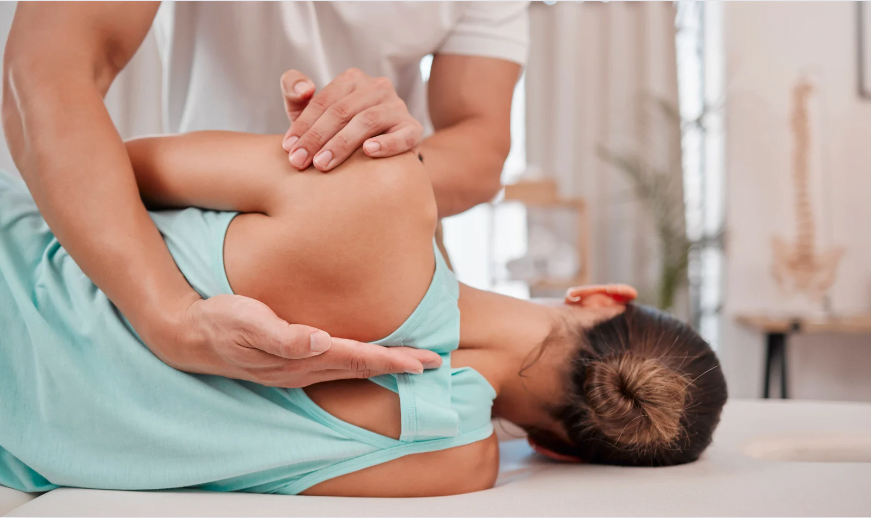Fashion is now a part of everyone’s life. The definition and meaning of fashion change with every changing era, and every coming year comes with new fashion and beauty trends. Body piercing was generally considered for earrings and nose pins. Now, body piercing is done on almost every part of the body, and the back Dermal Healing Process is one of the fashion piercings done on the back of your body.
This embedded piece of jewelry might look gorgeous and make your back look attractive but it requires proper care, especially during its complete wound healing stages. This article is a proper guide to aftercare of the back dermal for proper healing and integration of the dermal piercing and to avoid any infection.

Keep reading this blog to get information about the back dermal healing process and guides on post-injury skin care.

What is Dermal Piercing? Dermal Healing Process
Dermal piercing is also known as single-point piercing or microdermal piercing. It is a type of body fashion in which jewelry piercing is done but not like earrings, there is no exit from the piercing. A small anchor is inserted into the skin that holds the piece of jewelry on the skin surface.
Dermal piercings are usually healed within 1-3 months but this healing depends on different factors like health conditions, hygienic conditions, aftercare methods, and also the location of the piercing.
Dermal piercing can be done almost everywhere on the body. The most widely accepted locations for dermal piercing are the cheeks, chest, neck, and lower back.
Back Dermal Piercing
If you love to wear backless dresses or short dresses, you must be willing to make your back and waist attractive. Back dermal piercing is a modern type of fashion jewelry, widely loved by teenage girls. In back dermal piercing, a dermal piercing is placed at the lower back with the help of an anchor inserted in the skin.
A small cut is made on the lower back to insert the jewelry anchor. A piece of jewelry is then attached to that anchor.
Back dermal piercing takes time to heal, mostly 1-3 months but this time can vary depending on your health condition, immune response to scar tissue formation, and dermal repair methods followed.

Aftercare Tips for Dermal Healing Process
While choosing back dermal piercing, you must consult a skilled professional cosmetician, who knows well about skin regeneration techniques and aftercare advice to avoid any negligence in the procedure.
1. Maintain Cleanliness and Hygiene:
Back dermal piercing involves incisions and the insertion of an object into the skin, thus it requires a bacteria-free environment and proper hygiene care. Any carelessness or unsanitary lifestyle behaviors can lead to severe bacterial or fungal infections and may delay wound healing.
Avoid using some chemicals over the wound. Wash the wound with simple saline water and keep it dry.
2. Healthy Lifestyle:
Healing is our body’s natural response to cell growth and tissue formation. Eat healthy natural food, and avoid processed and oily fried foods that prevent healing. Keep yourself hydrated.
Beauty lies in health, so maintain your beautiful skin by living a healthier lifestyle.
3. Avoid Irritation to the Wound:
Protect the wound from irritants, either fabric or chemical. Wear loose clothes to prevent entrapment of the dermal pierce into the fabric causing irritation to the un-healed wound.

4. Protect the Wound:
Keep your wound protected from external damage and external pressure. Avoid sleeping on your back dermal, especially during the early months of healing. Avoid touching the piercing, it may cause damage, trauma, or infection to the skin. During the early months of healing, keep the wound protected with a waterproof bandage to avoid any moisture entry into the wound that may cause bacterial or fungal growth. Avoid swimming or water baths.
5. Look for Any Potential Complications:
Suppose the dermal wound is not handled with proper sanitation and care. In that case, it can cause several complications like infection, pus formation, scarring, and sometimes, even after some time, the migration of pierce occurs.
Improper care can cause your wound to cause scarring that will be quite unacceptable for you. Different skin regeneration techniques are available to get rid of scarring.
Sometimes, the skin does not accept the dermal pierce and pushes out the dermal anchor. This results in the migration of the pierce from its actual position.
You must consult your piercer in case of rejection or migration.
Master Your Back Dermal Healing Process Aftercare for Flawless Healing
Achieving the perfect look starts with exceptional aftercare. At our Markham cosmetic clinic, we’re committed to guiding you through every step of the healing process for your back dermal piercing. By following our expert post-piercing tips—including maintaining strict hygiene, protecting the wound from irritants, and embracing a healthy lifestyle—you ensure that your piercing heals beautifully, enhancing both safety and style.
Experience comprehensive skin care and aesthetic advice at a trusted beauty clinic in Markham. Our specialists provide tailored guidance to manage complications and promote optimal wound repair, so you can confidently flaunt your new accessory. Book a consultation with us today, and discover how our expert care and personalized services make us the top choice when searching for a cosmetic clinic near me in Markham.
All of the above-mentioned guides tell us that back dermal piercing must be taken care of with proper sanitation and protection. Follow these aftercare tips to prolong the Dermal Healing Process and promote wound repair.
For more skin care tips, Dermal Healing Process and aesthetic advice, contact and book your appointment at classycosmetics. We are here for your help.

